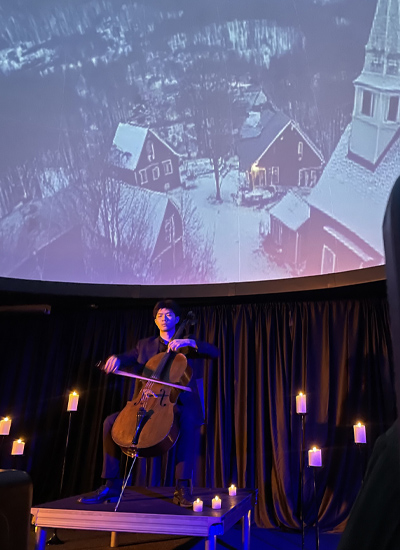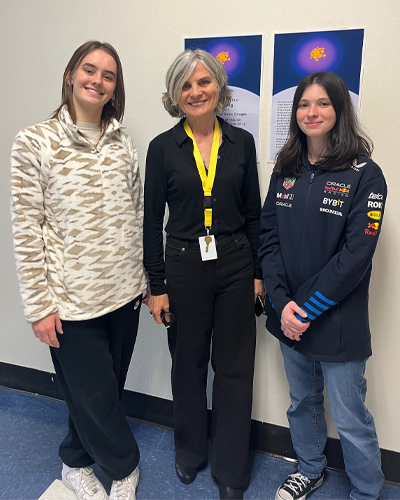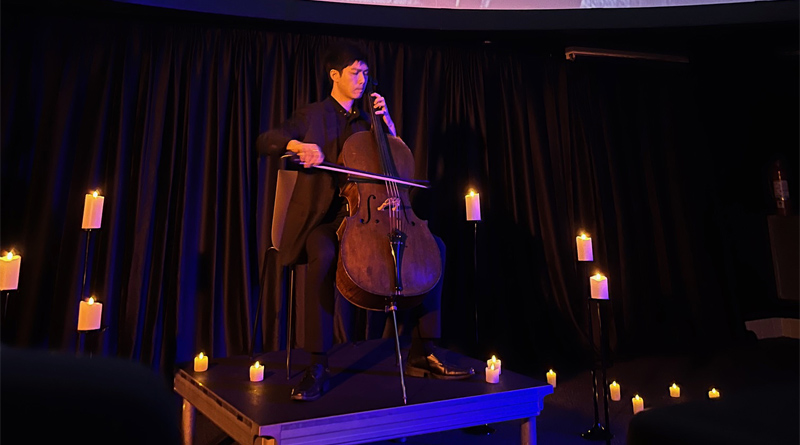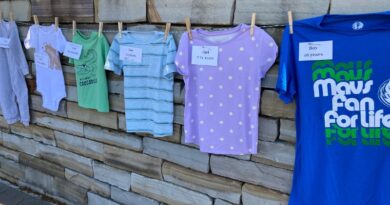Digitarium Takes Audiences on a Walk Through the Woods
Robert Frost poetry, classic cello music combine for fulldome performance
Viewers in HP’s Digitarium at Pierce Planetarium took a walk in the woods with poet Robert Frost this December thanks to a combination of visual imagery and the music of internationally acclaimed cellist SaiSai Ding.

During the first of SaiSai’s two pieces, winter images projected onto the Digitarium’s fulldome helped viewers appreciate the “lovely, dark and deep woods” described in Frost’s ‘Stopping by Woods on a Snowy Evening.’ The second piece featured panoramas of Baroque ceilings from Tobias Wiethoff, the head of technology and production at Planetarium Bochum in Germany.
“It was almost a magical experience,” said David Fahnle, HPISD deaf/hard of hearing teacher. “The combination of the music pieces chosen and the imagery was just very powerful.”
Though Frost’s poem is familiar to most, the Digitarium ventured into new territory to convey its message to audiences of community members and students.
Digitarium curator Glenys Quick, together with Moody Advanced Professional Studies students Ashley Schumacher and Julia Kerr, used the Stable Diffusion AI platform and Adobe programs to craft images for projection onto the fulldome.
One of their challenges: It’s not yet reliably possible to create fulldome images through AI. Instead, the team used specific, detailed prompts to design hundreds of circular images before selecting those to be used during SaiSai’s performance.
“There’s definitely a lot of time spent not just finessing the prompts, but also selecting the images, because you really need to scan every little detail,” Schumacher said. “The human conscience is so easily able to pick up on the tiniest things that are off. If a deer has paws, which happened to me once, you’re immediately going to see that, even if it’s just a very small part of the image.”

While the audience joined in Frost’s travels, SaiSai performed Bach’s “Cello Suite No. 6 in D Major,” the most difficult of the composer’s cello suites. It is intended for a five-stringed cello, as opposed to the standard four-stringed, SaiSai explained.
SaiSai’s second piece, the rarely-performed “Toccata Capricciosa, Op. 36” by Hungarian composer Miklós Rózsa, was accompanied by images that Wiethoff shared with the Digitarium without a fee. Wiethoff also contributed some winter images featured in the performance.
“I was just so astounded by the generosity of the planetarium community as a whole,” Quick said. “They are so generous with their offers of what they can give us, how they can help.”
Though SaiSai has performed at venues including the Morton H. Meyerson Symphony Center and Carnegie Hall, he said that HP’s Digitarium stands out among performance centers around the globe.
“This hall is probably one of the really top-notch halls,” he said. “The sound is great in here because it’s a dome, so the sound is surrounded, and it gets pulled up about 10 meters. And very few halls can do that.”
The concert was presented by the Moody Innovation Institute, the Moody Advanced Professional Studies Program, and the Digitarium at Pierce Planetarium. It was sponsored by the Moody Foundation, the Moody Advanced Professional Studies Program, La Fiesta de las Seis Banderas, and HP Arts.









